Last month, my Instagram followers were treated to a very informal unboxing of LOEWE candles. I completely missed the email memo that one of the candles was made out of 610 grams of beeswax which I was absolutely thrilled to light up—I accidentally hurt my own feelings when I looked up the price afterward, but what’s the point of living if you can’t enjoy things while they last? Burn baby, burn! This candle smells delicious and I definitely want another if anyone here is feeling generous... I wasn’t aware that the brand had a beeswax candle collection until I received this PR package (media brat perks!), so I’m a bit tardy to the party but happy to be here now. Apparently, their beeswax is sourced from a supplier in Portugal where all of the candles are also handmade.
Beekeeping has become particularly trendy in recent years especially amongst the elite—Beyoncé, Angelina Jolie, Meghan Markle, Jennifer Garner, Hilary Duff, Yolanda Hadid, and the Beckhams are a few of many celebrities that reportedly got on board. Starting in 2022, Flamingo Estate cashed in by harvesting honey directly from the homes of Jane Goodall, Julianne Moore, Lebron James, Kelly Wearstler, Ed Ruscha, Ai Weiwei, Will Ferrell, and Tiffany Haddish for the holidays—for $250 one of these A-list jars could have been yours! (For the record, 100% of the proceeds are donated to charities like A Sense of Home, Everytown for Gun Safety, and Refugees International.) The Los Angeled-based brand sells a variety of honey products sourced directly from the hilltop orchard like rose honey, wildflower honey, and creamed mānuka honey along with mānuka body cream and soap.
What’s all the buzz about?
Whenever friends or family travel to Paris, I beg them to bring back a jar of lavender honey from Provence for me. I’m also a longtime fan of manuka honey, I swear by ACTIVIST’s 300+MGO and elixir drops. But I’ve been hooked on beeswax candles ever since I started buying them from Alysia Mazzella. I can’t preach the gospel enough for her products, the tea light candle packs have become a home essential and the Mirth Pillar is a masterpiece! (You can also find a selection of her candles stocked at Goodee.) Alysia and I first became acquainted when I profiled her for an Atmos feature back in 2020. Beyond working as a traditional and artisanal beeswax candlemaker, she also runs Backland NY which is an educational apiary and seasonal garden in Upstate New York—subscribe to her newsletter to stay in the loop.
Alysia’s biggest selling point for beeswax is that it is the only wax that is “naturally available” because all you have to do is take it from the hive and melt it down, although you “might have to filter it, but you could do that with a cheesecloth.” As she further explains, “nuts, beans, coconut, soy, paraffin, they have to be rendered through this very intense heating and filtration—they’re a byproduct of the oil. It takes so much energy, so much machinery, so much effort.” Beeswax also serves as a natural air purifier which is why Alysia doesn’t add any scents or dyes to her candles; she prefers to maintain the wax in its purest and most natural form. Describing the glow as “a very warm, bright light,” she claims that beeswax candles “burn on the same spectrum as the sun.”
It’s not a hobby, it’s a lifestyle
For Alysia, beekeeping is so much more than a hobby—she views it as a responsibility to care for their well-being. Her full pivot to beekeeping took shape after noticing a stark lack of diversity amongst the beekeepers that she would source beeswax from New York State. “I was mostly struck by how everyone was an elder, white, cis male, and there was literally no variation,” she recalls. “I was just like, ‘First of all, why is that?’ And then I found out that beekeeping came to the Americas with colonialism so that’s why it stayed in those bloodlines.” The motivation to educate people about beekeeping deepened when Alysia dug deeper into the barriers to entry that have been in place for centuries. “I wanted to decentralize that power,” she says. “That put a little fire under me to be like, ‘I want to diversify.’”
Alysia isn’t sold on the economics, preferring to maintain a reciprocal relationship with the bees rather than profiting off their labor. Her approach is rooted in being a steward to the bees, so every step has been toward opening a door that steers away from the greed and scarcity mentalities that have been perpetuated by competitive gatekeepers driven to maintain control and ownership within the industry. She took an interest in biomimicry beekeeping specifically because of its regenerative properties that focus on how the bees survive in nature versus man-made hives.
“Nobody really knows how the bees live in the wild as far as mainstream beekeeping and it doesn’t matter to them because it’s mostly for profit,” Alysia explains. “The people I’m sourcing my wax from are small family-owned apiaries making a living, but then there’s beekeepers who have thousands of hives and truck them around the country to pollinate monocrops.” Monoculture practices not only disrupt the natural order of the habitat, but the mass-production is contributing to the collapse of bee colonies.
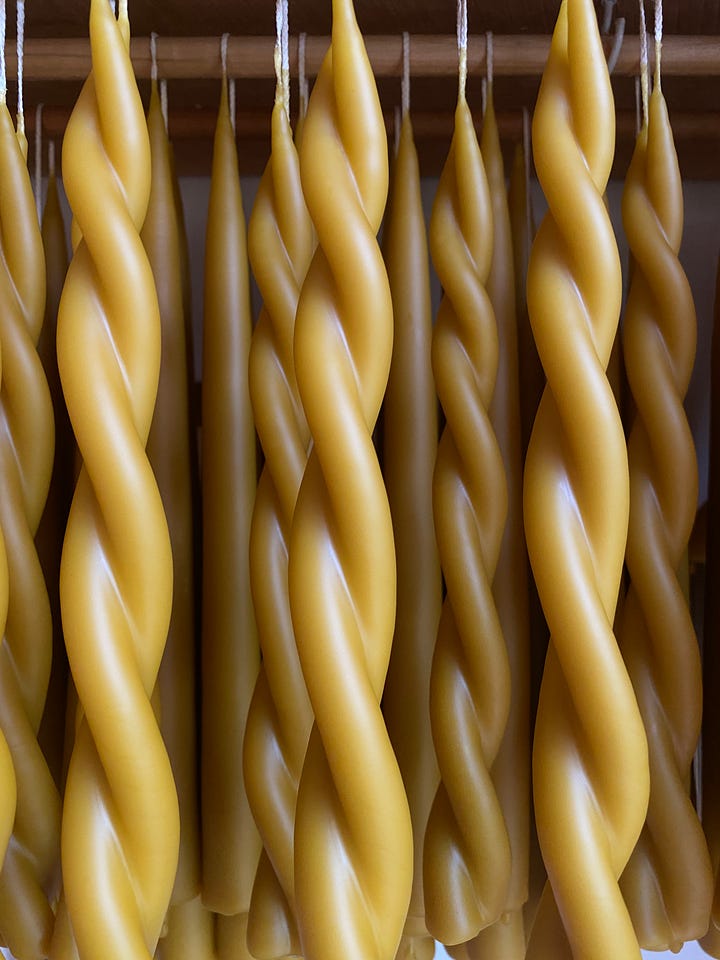

Backland NY sources wild genetics so they’re attracting native populations of honey bees from the forest through sustainable practices and regenerative land practices like swarm-baiting, stationary bee yards, beeswax foundations, overflow harvests, top bar hives, small population hives, and widely spaced hives. “We’re building our own hives and studying how they exist in nature because the honey bees will rewild themselves,” Alysia explains. In other words, she’s directly supporting the survivability of managed hives through biomimicry of rewilded hives.
For the next generation of beekeepers, Alysia hopes to shift the perspective on what the honey bee needs in order to survive, and repairing that relationship to better support the resiliency of biodiverse ecosystems. “It’s really about slowing it down and understanding their art of living so that we can mimic it and be a good steward to them,” she adds. “As someone who really cherishes a relationship with nature, I think we should interact—we should be a part of it.”
Save the bees from… who?
For those that weren’t aware, bees are a very important part of agriculture through the process of pollination. Alysia cites human interference as the main antagonizer that is affecting the survival of bees, partially blaming commercialized beekeepers for perpetuating a vicious cycle that goes against nature by destroying the microbiome of the hive body. “The whole talk is, ‘Save the bees. Bees are dwindling. Bees are dying. Hives are at all time loss,’” she says. “But really it’s because we’re treating them with chemicals. We’re taking all their honey and giving them sugar, we’re over-managing them. It’s so obvious why it’s happening, but nobody’s talking about that… [Bees] don’t actually need saving, they’re doing great on their own.” (Alysia also insists that bees are “destined to die,” so anyone investing in beekeeping as a hobby is looking at spending at least $150 to replace their hive every year plus the cost of antibiotics.)
So, is beeswax about to the be the next status candle? Alysia thinks we might have our hands on another greenwashing fad, but isn’t against the idea of beeswax candles dominating the market if companies aren’t cutting corners to produce them. She warns people to be wary if there’s no transparency regarding where the wax is from—since beeswax is typically sourced on a very large scale, any imported wax is going to be heavily diluted. But when the beeswax is sourced locally, you can literally smell the difference. At the end of the day, Alysia sees this as a prime opportunity to educate even more people about the miraculous honey bee.
As a special treat exclusively for NH readers, use the code “NOBODYSHOME” at checkout for 15% off at www.alysiamazzella.com.


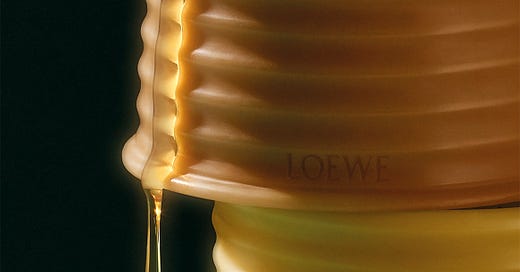


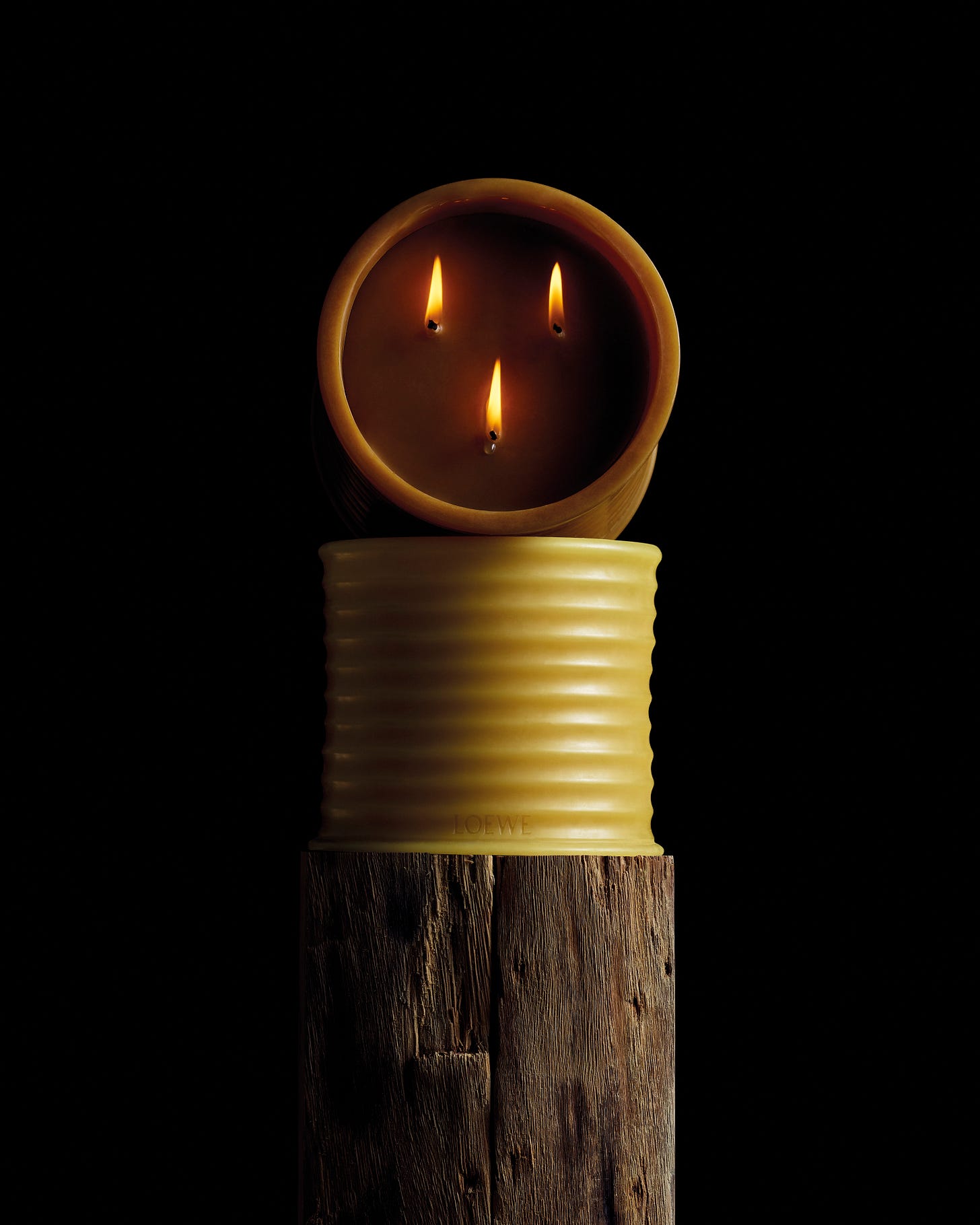
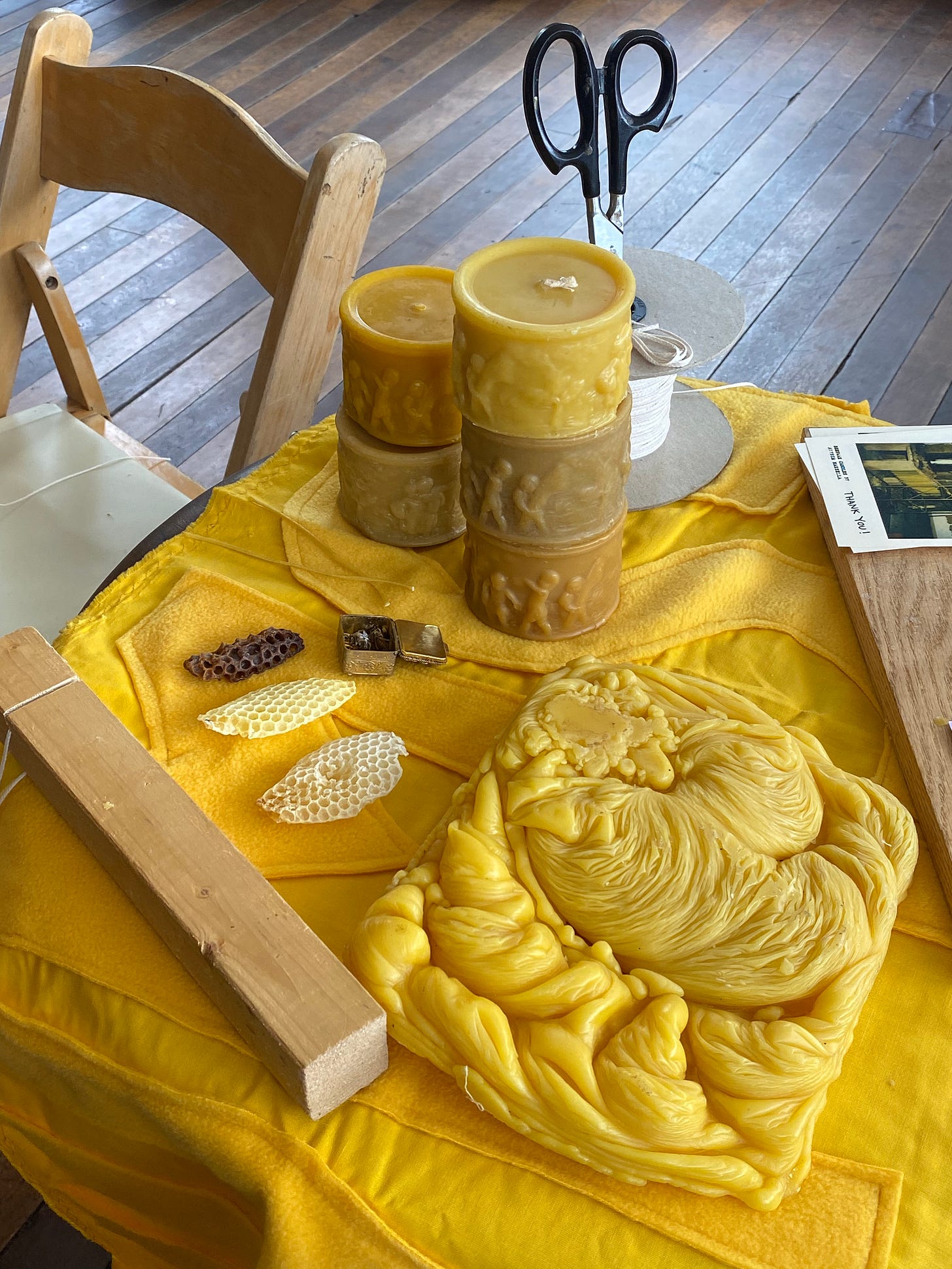
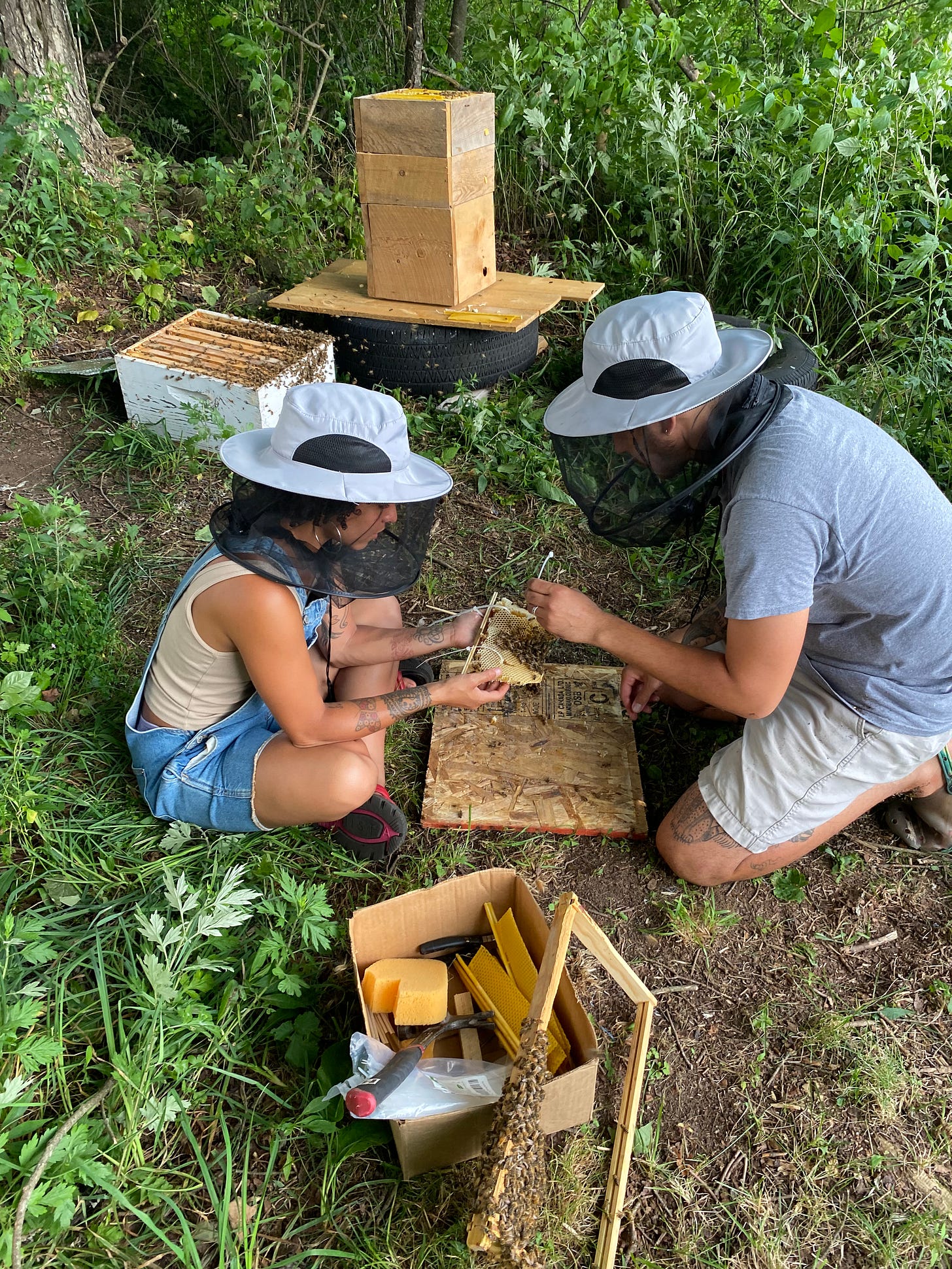
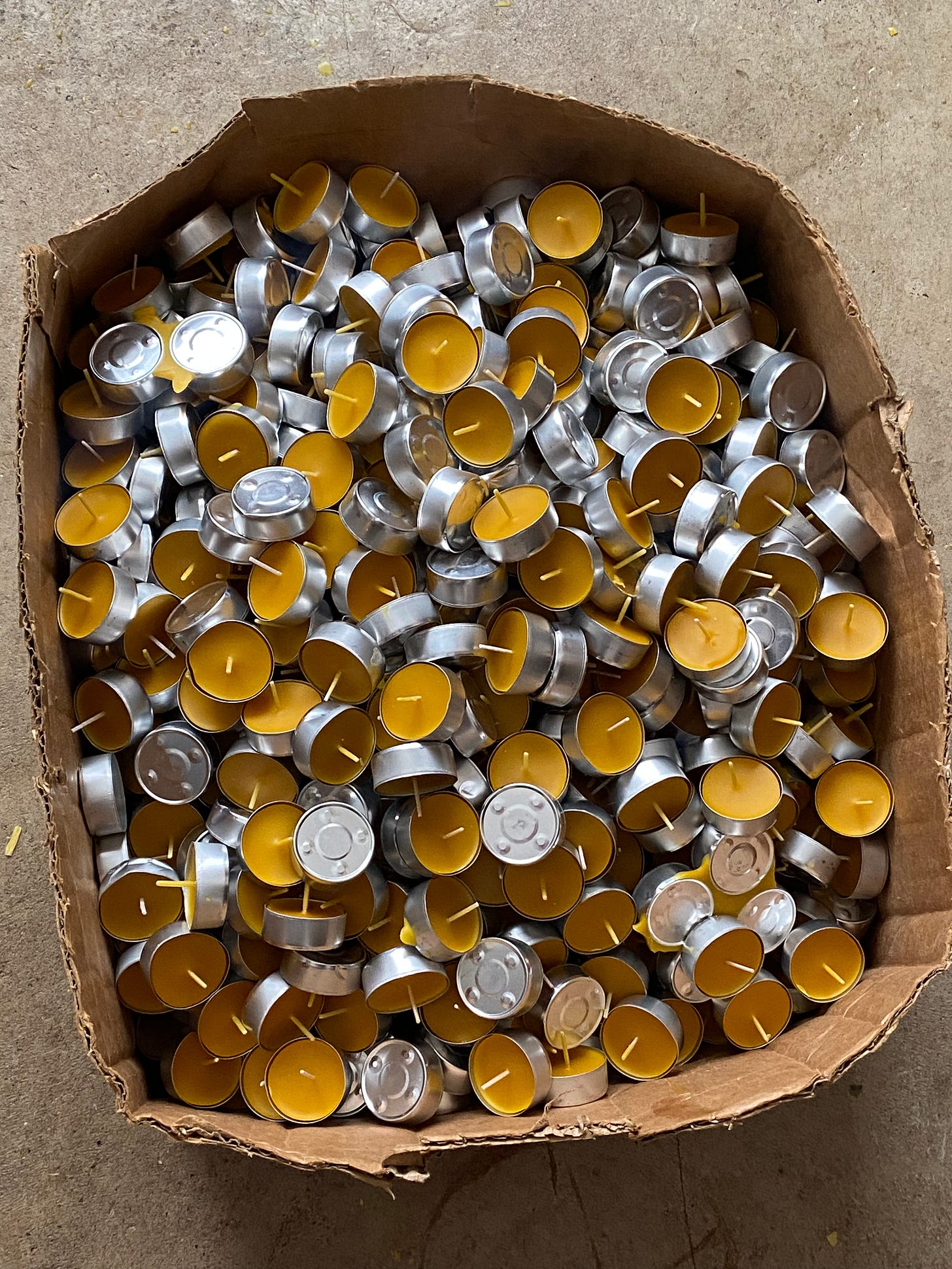
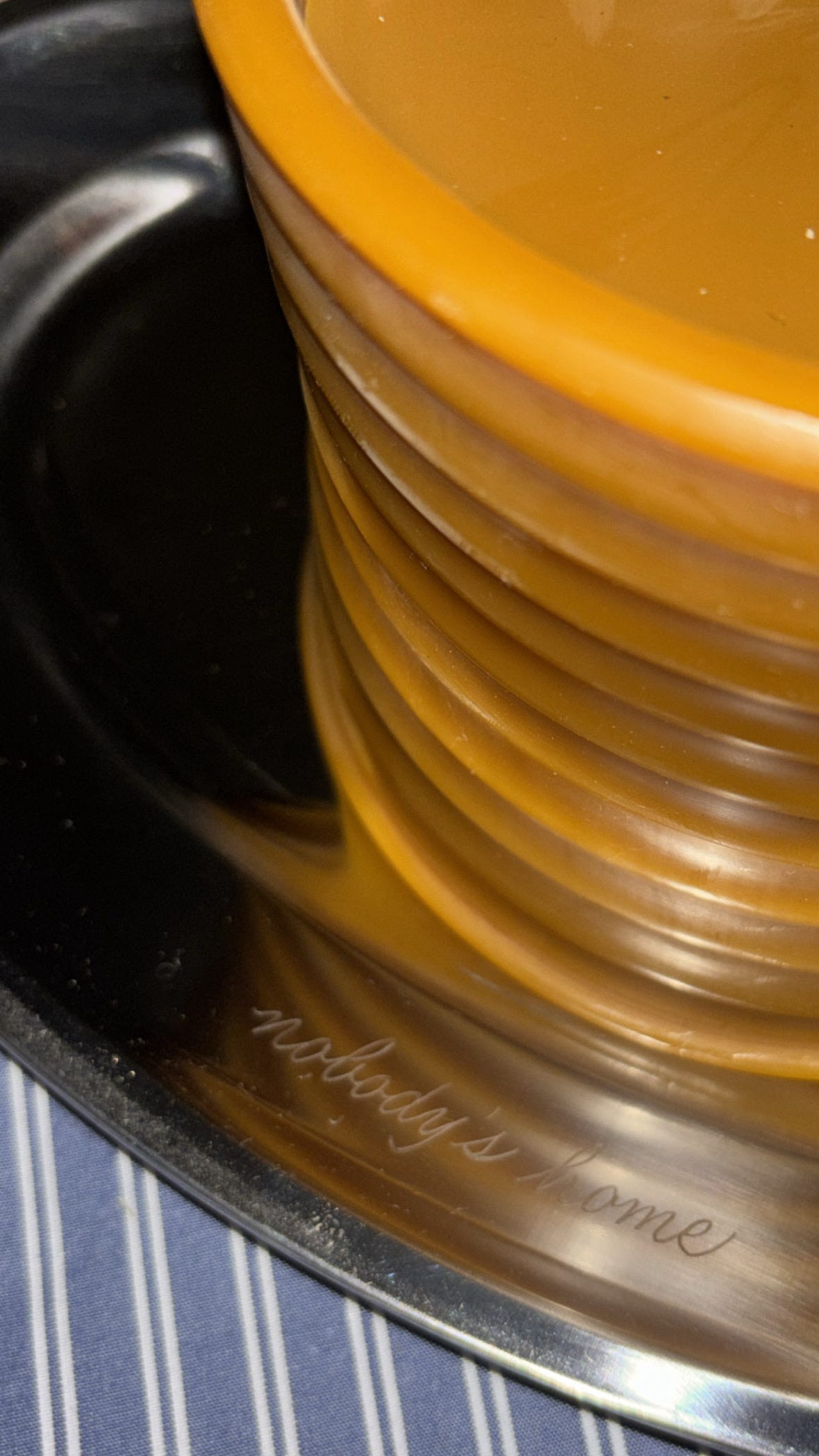
What mental illness is it when you consider buying one of Loewe’s $300 candles??? You have me thinking about it 😩
loooove this syd. i’m still burning the same mirth pillar candle i bought 4 years ago!